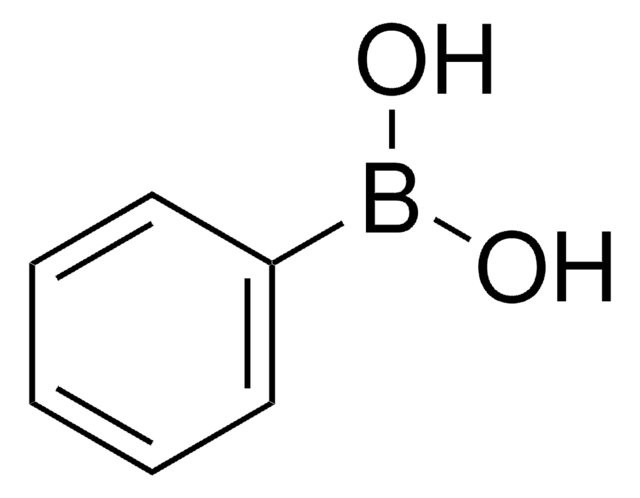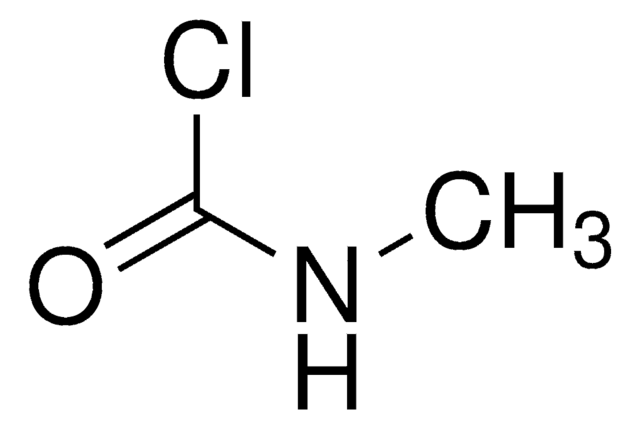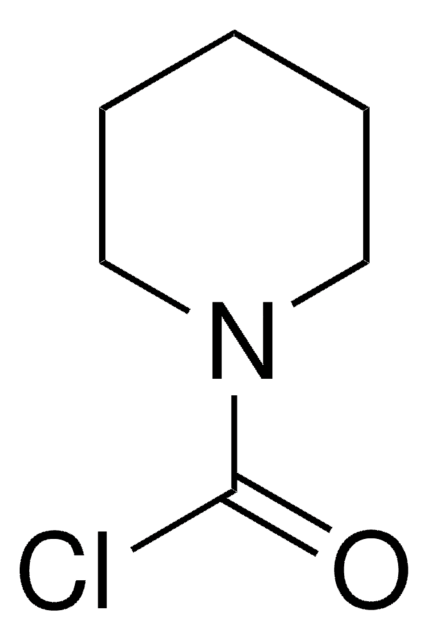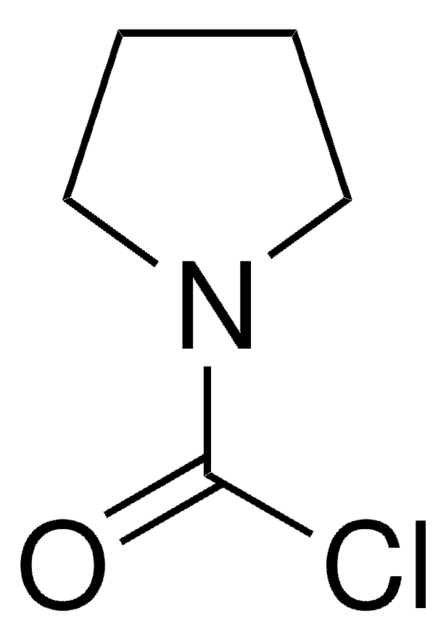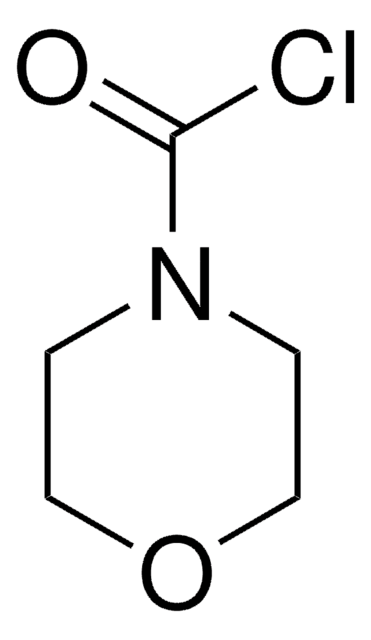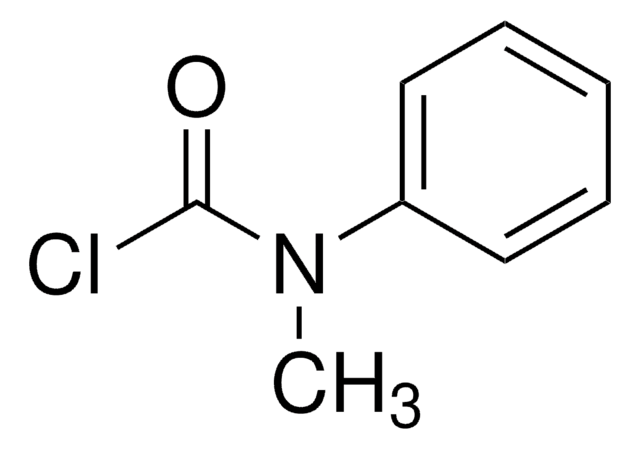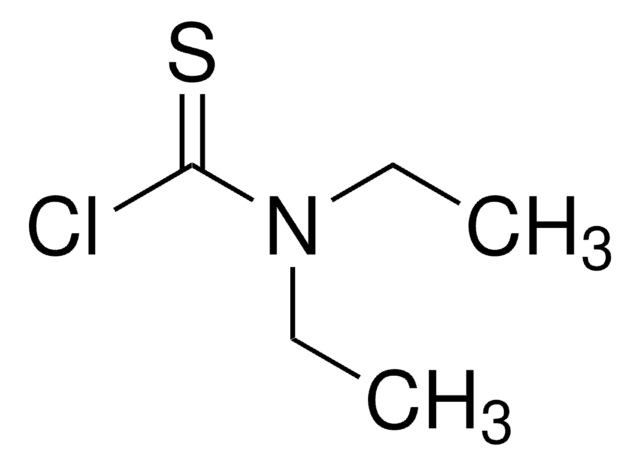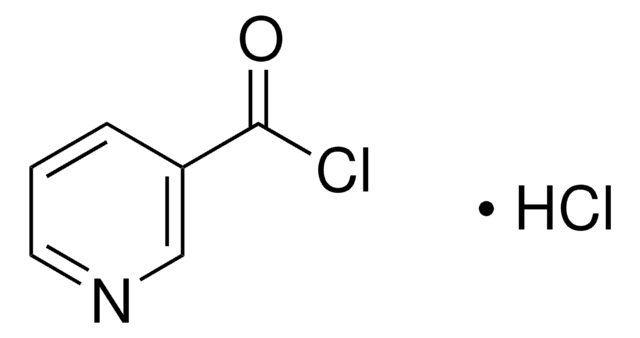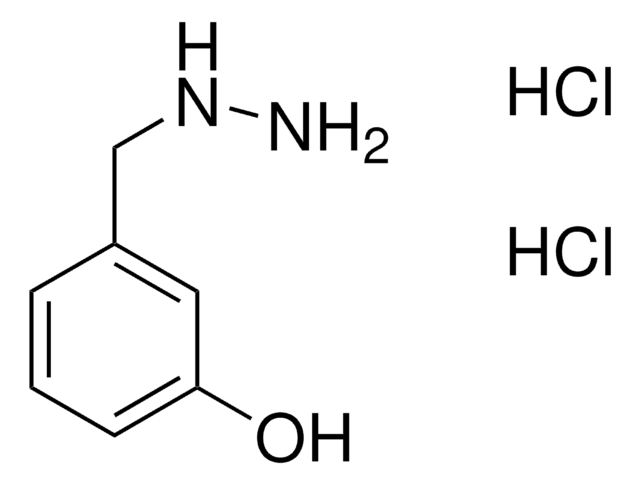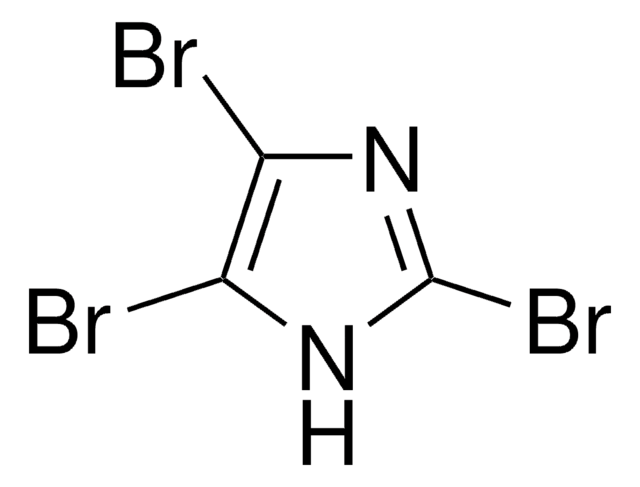D152803
Dimethylcarbamyl chloride
98%
Sinónimos:
Chloroformic acid dimethyl amide, Dimethylcarbamoyl chloride
About This Item
Productos recomendados
Nivel de calidad
Ensayo
98%
Formulario
liquid
índice de refracción
n20/D 1.453 (lit.)
bp
167-168 °C/775 mmHg (lit.)
mp
−33 °C (lit.)
densidad
1.168 g/mL at 25 °C (lit.)
cadena SMILES
CN(C)C(Cl)=O
InChI
1S/C3H6ClNO/c1-5(2)3(4)6/h1-2H3
Clave InChI
YIIMEMSDCNDGTB-UHFFFAOYSA-N
Aplicación
- Disubstituted carbamates from benzylphenols.
- 2-Cyanoisonicotinamide by reacting with isonicotinic acid N-oxide and zinc cyanide. This method was adopted to synthesize a novel xanthine oxidoreductase inhibitor.
- Acetylcholinesterase (AChE) and serotonin transporter (SERT) dual inhibitors.
Palabra de señalización
Danger
Frases de peligro
Clasificaciones de peligro
Acute Tox. 3 Inhalation - Acute Tox. 4 Oral - Carc. 1B - Eye Irrit. 2 - Skin Irrit. 2 - STOT SE 3
Órganos de actuación
Respiratory system
Código de clase de almacenamiento
6.1C - Combustible acute toxic Cat.3 / toxic compounds or compounds which causing chronic effects
Clase de riesgo para el agua (WGK)
WGK 3
Punto de inflamabilidad (°F)
179.6 °F - closed cup
Punto de inflamabilidad (°C)
82 °C - closed cup
Equipo de protección personal
Faceshields, Gloves, Goggles, type ABEK (EN14387) respirator filter
Elija entre una de las versiones más recientes:
¿Ya tiene este producto?
Encuentre la documentación para los productos que ha comprado recientemente en la Biblioteca de documentos.
Los clientes también vieron
Nuestro equipo de científicos tiene experiencia en todas las áreas de investigación: Ciencias de la vida, Ciencia de los materiales, Síntesis química, Cromatografía, Analítica y muchas otras.
Póngase en contacto con el Servicio técnico